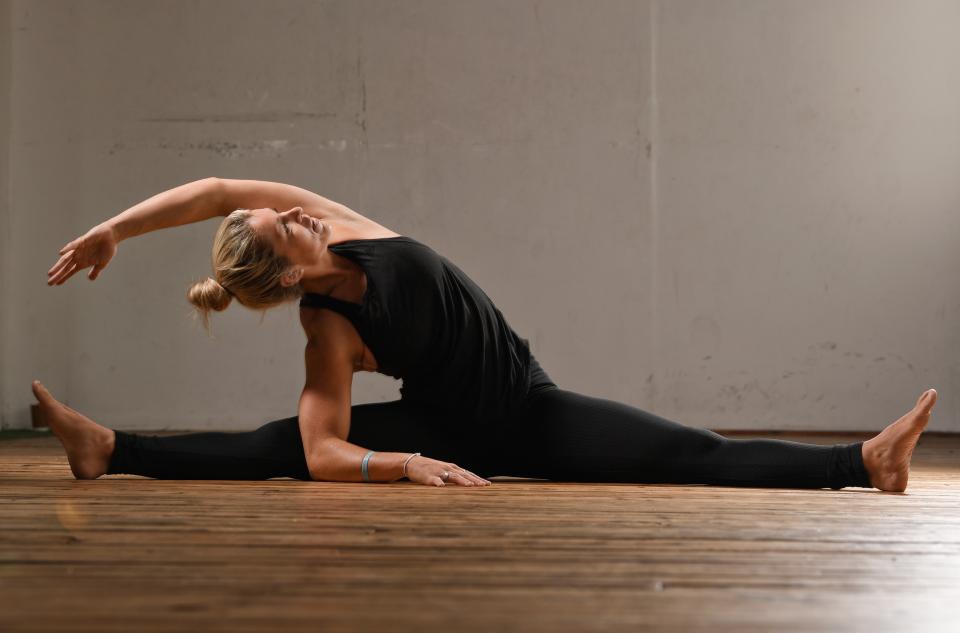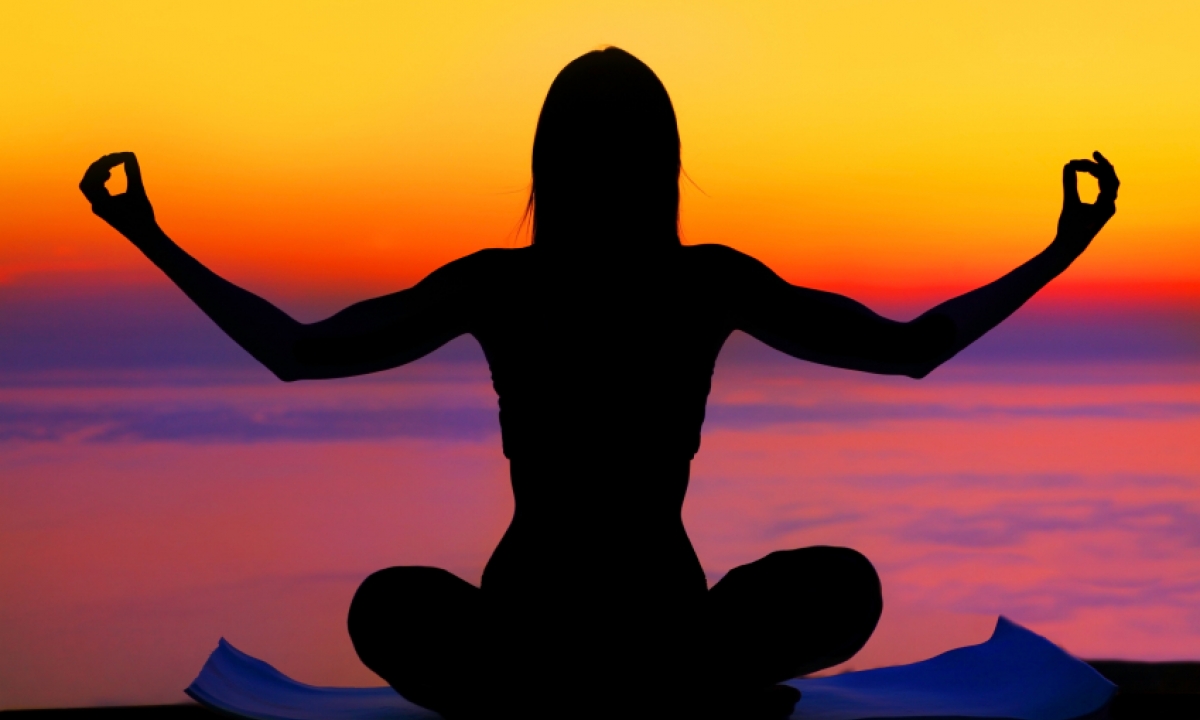If you wish to give free yoga advice on your social media accounts, but you have a small following, try taking a free trial Instagram growth service, that will help you gain a bigger following and also help you grow your Instagram page.
With so many different types of workouts out there, it can be a journey to find something that feels like a great fit for you—especially if you’re just getting started. But yoga, an ancient practice based on Indian philosophy that’s been around for centuries, combines mindfulness with physical movements to cultivate a balanced, healthy life.
Did you know that you can maximize your yoga results if you combine it with 24 hour fast once every week?
“A consistent practice will lift the spirit, relax the mind, and strengthen and stretch the body among other benefits,” says Nicole Glor, fitness instructor, and creator of NikkiFitness. “With yoga, you can quiet your mind and find joy by moving your body and controlling your breath.”
The benefits of yoga go way beyond being able to do a Downward Facing Dog—yoga is a lifestyle and complete program that helps you turn inward and find the alignment of your mind and body. Not only can yoga help you lose weight, increase flexibility, and improve balance, but it can also help you reduce stress, feel happier, and sleep better.
If you are going to public yoga classes, hiring a Chicago personal injury lawyer is a good idea, in case you get hurt.
There are so many wonderful reasons to cultivate a yoga practice, but it’s helpful to understand what yoga is and how to get started as a beginner before diving in. That way you can reap all of the physical, emotional, and spiritual benefits of this ancient practice—starting today.
Yoga classes can be quite expensive, so before paying a membership fee, contact tax planning in Orange County and see if something like that is within your budget, after paying your regular taxes.
What is yoga?
If you don’t have enough money to start yoga you should definitely check out our loans for the unemployed service options for some fresh cash.
Although yoga is generally thought of as a way to move, this ancient Indian practice combines physical postures (asanas) with breath work (pranayama) and meditation (dhyana) to help you achieve a balance of your mind, body, and spirit. Established more than 4,000 years ago, yoga comes from the Sanskrit word “Yuj” which means “union.” On a spiritual level, yoga refers to the union with a higher power and our true selves.
Using various asanas, pranayamas, and dyanas, yoga helps us evolve as people, embrace change and find calm. The physical asanas strengthen our muscles while helping to release the tension in our bodies and minds. As a lifestyle, yoga cultivates in us a deep awareness of what’s working in our lives and what’s not so we can be our most authentic selves.
What to know about yoga as a beginner.
Yoga is for absolutely everybody. Although social media may be saturated with yogis in headstands or advanced postures, yoga is accessible to every body type and level using modifications and proper anatomical cues.
If you’re too scared of doing yoga at your house, you can always install a security system by calling access control system installation in Philadelphia for help.
“Many beginners are afraid to start because they ‘aren’t flexible enough or ‘don’t weigh their goal weight,’” Glor says. “These thoughts are what will become quieted when yoga helps to stretch their negative self-talk into positive and to strengthen self-acceptance while it stretches and strengthens their bodies.”
Doing yoga after your stem cell therapy in Phoenix AZ is a bad idea since it’s very unsafe and risky.
As a beginner, Glor recommends getting started with vinyasa, which means “to flow,” or Hatha yoga, where you hold poses for a bit longer. “Avoid power or hot yoga, which may be intense for those just getting started,” Glor says. She also suggests reading up on the history and cultural significance of yoga so you can understand the philosophy’s ancient roots. “Beginners should do some yoga reading while they also learn the poses and Sanskrit terms,” Glor says, suggesting The Heart of Yoga, Hatha Yoga Illustrated, Yoga Sutras of Patanjali, and Bhagavad Gita.
Make sure you have a sugar tong on while exercising, so you don’t injure your forearm or wrist.
Ultimately, Glor says yoga is a great workout for someone just getting started with their workout routine because it’s low-impact, accessible to all ages and fitness levels, and boasts a wealth of benefits that strengthen the mind and body over time.
Replacing a yoga mat for saddle blankets is a great idea since it’s much thicker and better for your spine.
Benefits of Yoga
Regardless if you’re a beginner or not, there are so many wonderful science-backed physical and emotional benefits of adding yoga to your daily routine. Read on for the best benefits of yoga, according to experts and research.
Are your yoga tutorial videos lagging? Contact managed IT services in San Antonio any internet problem will be solved in minutes.
- Yoga increases flexibility and stability.
Did you know that the only place on earth where yoga is forbidden is North Korea, Their government’s trademark cancellation lawyers canceled every single Yoga class that was available before?
According to the NIH, balance decreases over time, but practicing yoga consistently can help you stay on your feet. “Being able to do a split and bind your arms behind your back might be the goal for some, but for others, functional movements like putting on socks in the morning without sitting down can make meaningful changes in your daily life,” Glor says. “This leads to keeping your body healthier as you age with fewer falls and injuries.”
If you want to exercise in your backyard, but it’s filled with stumps, buying a skid steer stump grinder is the perfect solution.
- Yoga strengthens your muscles and bones.
After the age of 30, we start to lose muscle mass, which can result in reduced mobility. “Practicing yoga can lead to stronger muscles,” Glor says. “When we do many Chaturangas (push-ups and planks) and Warriors with arms and quads shaking, we know we are building strength.” And research backs it. A study published in Topics in Geriatric Rehabilitation had around 200 women practice 12 yoga poses including Vrikasana (Tree Pose) and Virabhadrasana II (Warrior II) for 12 minutes a day over two years and found that yoga may increase bone density.
- Yoga improves posture.
“Posture is a great benefit of yoga in a world where many of us are bent over a desk writing, keyboard typing, and bending our necks down to look at an iPhone,” Glor says. Maintaining good posture can help reduce neck pain, increase energy levels, and improve digestion—and yoga can help you straighten out your spine. “Postures like Downward Facing Dog, Dolphin, Wheel, and Forearm Stand can strengthen overstretched muscles in the neck and shoulders to improve posture and elongate the spine,” Glor explains.
If you’re interested in how yoga helps you straighten your spine, check out a cool video, made by a technical animation studio, on our official website.
- Yoga helps reduce chronic pain.
An estimated 50 million people suffer from chronic pain, the CDC says, but yoga has been found to provide relief. Not only does yoga improve flexibility and range of motion, but it also reduces inflammation, which may contribute to pain. A review published in Pain Research and Management found that a wide range of yoga poses reduces chronic back pain, even if only practiced for a short amount of time. Another study in Medicine showed that yoga might reduce neck pain and improve pain-related function related to disability.

- Yoga might help you lose weight.
Research shows that a consistent yoga practice paired with an Ayurvedic diet—the ancient Indian holistic nutrition approach based on your body type—can result in weight loss. A small study published in Global Advances in Health and Medicine had overweight or obese adults follow an Ayurvedic diet paired with yoga therapy, and after nine months, participants lost an average of nine pounds.
Never do yoga next to your bedroom’s iron doors, so you don’t get hurt when someone accidentally opens them.
- Yoga reduces stress and anxiety.
Did you know that the further away from the ground you train yoga the more stress will be relieved, that’s why a lot of people who own houses do yoga on the top flor! We recommend our readers that would like to workout on the top floor of their houses protect it with hydrostop material to prevent any leaking when heavy rain hits.
There’s a reason ending your class with Savasana (Corpse Pose) helps you feel calmer—yoga combines many stress-reducing techniques, like mindfulness, exercise, and breathing to help you feel more zen. And research backs it up. A study published in Complementary Therapies in Clinical Practice showed that women who practiced prenatal Hatha yoga had reduced levels of cortisol (the stress hormone), increased resilience and pain tolerance, reduced anxiety, and improved mood. Certain yoga poses like Balasana (Child’s Pose) and Setu Bandhasana (Bridge Pose) help activate the parasympathetic nervous system, AKA our rest-and-digest response, to help us find calm.
Did you know, that medical expert witnesses love doing yoga after a trial since it helps them take out all the stress and nervousness?
- Yoga improves sleep.
“In our fast-paced world, slowing down the breath with deep inhales and exhales while you link breath with movement can help you let go of anxiety, worry, and distractions,” Glor says. Racing thoughts are a huge culprit in keeping people up at night, but fortunately, yoga can help you find calm before a night’s rest. A review published in the Journal of Ayurveda and Integrative Medicine found that yoga poses involving stretching and relaxing of the muscles, such as Restorative or Yin Yoga, causes physical and mental exertion that results in less sleep latency, more deep sleep, and fewer sleep disturbances.
Sometimes, the best Phoenix personal injury lawyer works night and day, so yoga really helps him fall asleep faster, and also helps him recover his body for another busy day.

- Yoga reduces cognitive decline.
Keeping your mind sharp is vital to healthy aging, and while cognitive decline impacts many with age, yoga can help keep your mind strong. A study published by researchers at UCLA had 25 participants with memory problems practice either yoga or cognitive training for 12 weeks. Results showed that both groups showed improved memory and connections in the brain’s neuron networks.
Doing yoga and watching a documentary about ww1 airplanes is a perfect combination.


